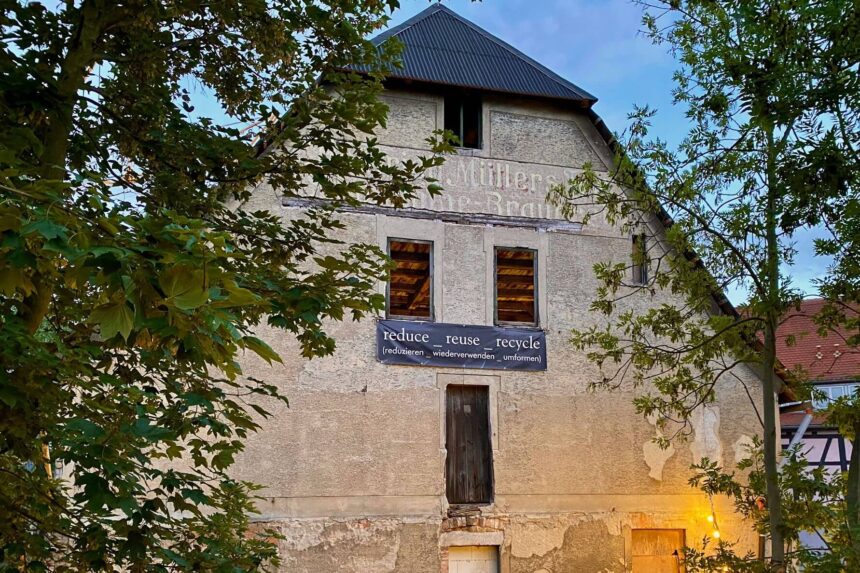by Agata Konczal and Marija Konjević
Redefining usage for historical structures comes as a meaningful cultural, economic, and environmental approach to bringing new life and purpose to existing forms.
An effort to reuse and revitalise an old building can be seen as a humble yet significant statement against the rapid consumerism of our time. It puts aside the omnipresent culture of consumption and disposal while highlighting the significance of heritage preservation and adaptation.
By giving new or better, say “upgraded”, life to this old historical structure, one not only displays appreciation towards local heritage but also creates a vibrant space that enriches the fabric of modern life.
Among many approaches and diverse examples of reuse and revitalisation, one particular case has captured our attention. Schwemme Brewery, a tangible representation of Halle’s industrial heritage, is owned and managed by Schwemme e.V. foundation. It serves as an illustrative case study for understanding how the principles of reuse and revitalisation translate into practice. Yet before delving into its current state and vision, it’s essential to understand the origins of Schwemme Brewery.
Thirsty? Stop by the river!
In German, schwemme means a place where one may obtain water, where animals, especially livestock, come to drink. The western shore of Mühlgraben River served as a watering point for horses since the Middle Ages and this is where the name of the adjacent street comes from: “An der Schwemme”. Schwemme can also be translated as a place where one can purchase a drink, for example, a tavern or a bar. So naturally this spot was perfect for a new brewery. In 1718, residents of Strohhof – back then a suburban part of Halle – built their jointly-owned brewhouse, which quickly became a significant player in the local beer market. The Schwemme Brewery, and later, brewery Zum Pelikan (“At the Pelicans”), served its purpose for over 200 years. By 1920, marked by the last beer produced there, the building had already been rebuilt, modernised and enlarged to comprise a residential house, restaurant and hotel. Sold in the same year, the former brewery housed in turn a fish processing plant, a pickle factory, a doctor’s office, and several craftsman workshops (including a shoemaker and a stove fitter). The building’s last purpose before being abandoned was to be a tyre repair shop.
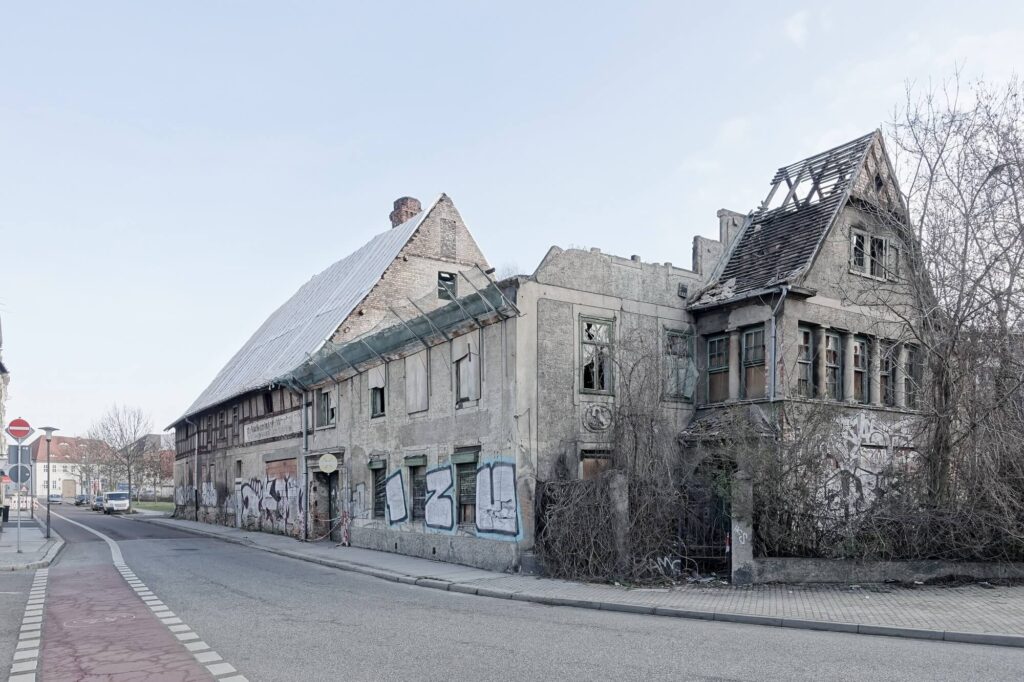
What damage might a twenty-year vacancy cause a building which made it through the most tumultuous periods in history, including both World Wars? A lot, it turns out. Since 1990, the historic brewhouse has stood empty, slowly falling into disrepair. It became a victim of repeated acts of vandalism: windows were smashed, doors were broken, and the facades were smeared. In 2015, a fire that broke out in the Schwemme Brewery caused significant damages, especially in the southern part of the building. When the almost 300-year-old monument was threatened with demolition, a group of people decided to take action. For this purpose, Schwemme e.V. was founded, and in 2016 the association bought the building from the municipality for the symbolic sum of 1 €. Finally, the brewery is in very good hands — hands that are capable of restoring the building to its historic status and putting it to new use.
Something is brewing…
For more than seven years now, the members of Schwemme e.V. have been trying with all their might to breathe new life into the old brewery. The association aims to save the monument and revive it as a creative space. Their proposal, developed in agreement with the city authorities, is to create an open space by the river in an urban, formerly industrial environment and make it permanently accessible to Halle’s art and cultural scene. It is important to point out that they have already come close to this goal, mostly through donations and the hardworking hands of volunteers. Civic engagement is crucial to the success of this venture. There is not some sort of historical society behind the Schwemme brewery project – these are local people committed to renovating the historic building.
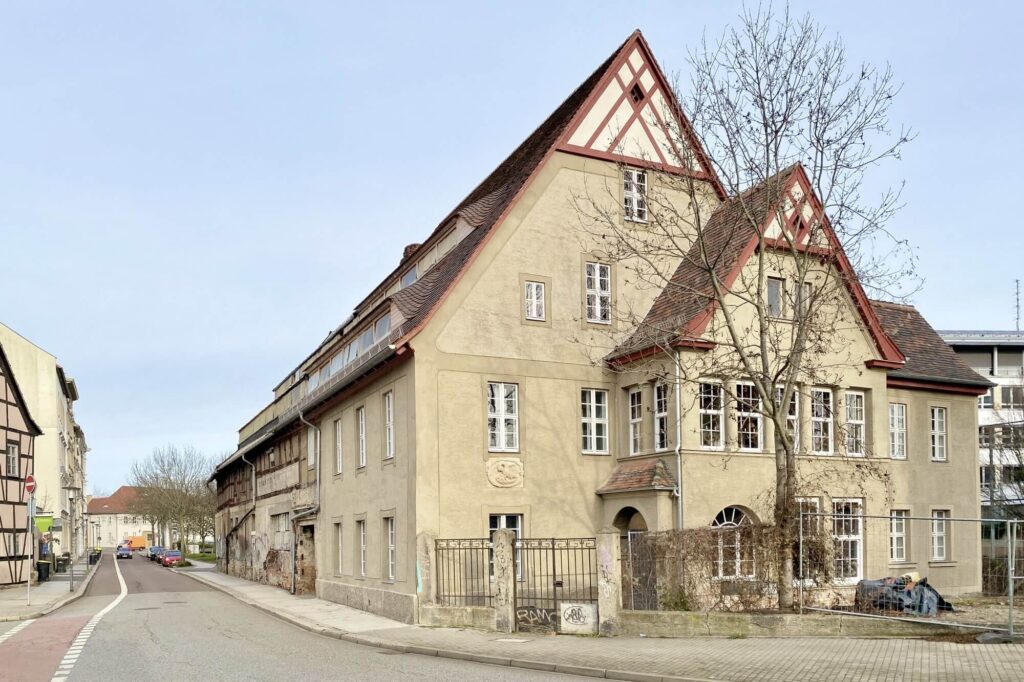
Restoring the building to a usable condition took years of work and dedication, and there is still a lot more work to be done. But the brewery already brings in many people. Something is going on every Saturday — cultural activities, concerts, readings, flea markets, exhibitions, weddings and birthday parties take place in the Schwemme all year long. One of the things that attracts visitors is… the beer! That is right! After a break of almost a hundred years, the mini brewery has been reopened, and now, under the brand Pelikan, it is producing its beer again.
Despite a calendar filled with events, the Schwemme is still largely undiscovered. Nevertheless, the number of visitors rises each year. According to Frank, a city resident, the place and the association’s activities have been receiving more attention lately: “The first time I was there, there were very few people, organisers and visitors. A few years later, the place was crowded! But the first time, they did not yet have their beer”, he smiles. For Frank, the best experience was the discovery of this place itself, “hidden behind modern architecture in a little idyllic paradise in the middle of the city”. As a person living in Halle, he sees the value of the project for the neighbourhood: “The Schwemme is one of the few spots where one can get a glimpse of how Halle once looked. And more importantly, how it functioned”. Asked about the concept of the project, and, in particular, the planned co-working space on the upper floor, he is a little bit less enthusiastic: “I think you cannot be picky when you want to preserve such buildings. Jump on any horse that could be working. I would wish to see something closer to the original usage. I could also imagine that it could partially be transformed into a living space, maybe like a commune. A commune in the heart of Halle. This would be great! I have the feeling that the idea of the co-working space could take away from the alternative spirit of the entire project. But, of course, I hope not”.
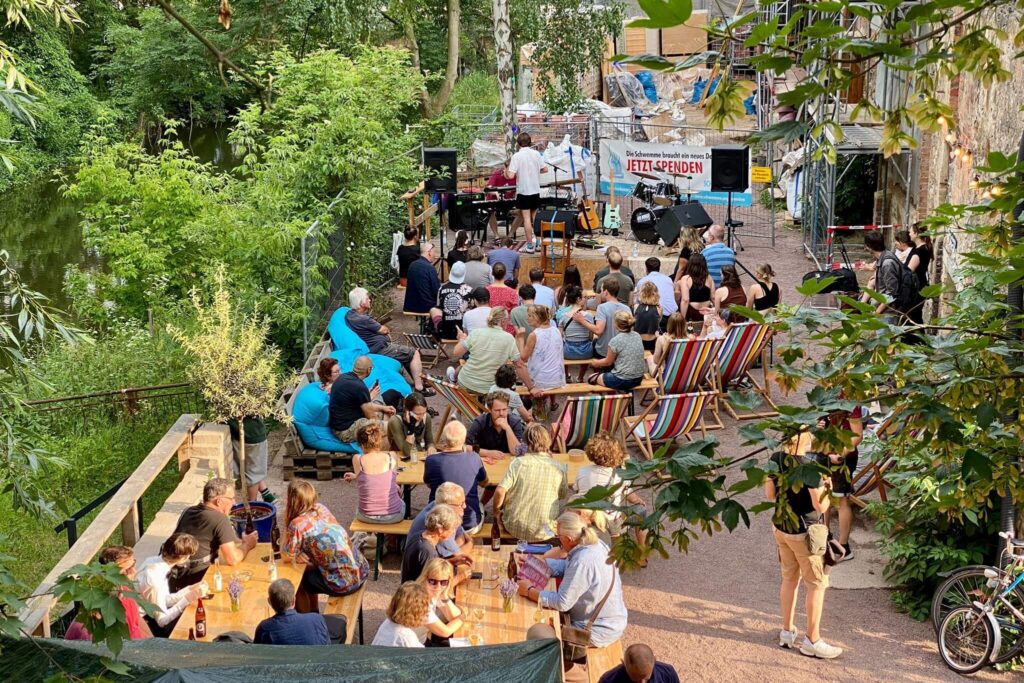
Schwemme’s present and future
Johanna Voll, a sociologist and self-employed project developer experienced in implementing co-working projects and a core member of the Schwemme e.V. team, explained to us how it all started and offered us an insight into the particular values that ensure the uniqueness of their concept.
According to Johanna, ‘‘With ownership come responsibilities’’. The very first step of the project was stabilising the deteriorating walls of the brewery to prevent further decay and ensure safety for visitors. While this was happening, the project team started sorting and cleaning debris from the site. With each empty container, the place started to awaken its potential. Once secured and cleaned, the team organised various events, theatre shows, exhibitions, and meetings with engaged citizens to test their ideas and gather further thoughts about the future of Schwemme.
‘‘We are looking into developing this project based on the concept of third space, ‘‘Johanna explains. ‘‘It is a place where people can work, meet, do activities, where people can learn from each other. ‘‘To ensure that future Schwemme visitors are offered a welcoming inclusive atmosphere, the project team is currently working on installing a lift to enhance mobility access for all. The eventual return to large-scale beer production is also in plans, once the time is set, but for now, the microbrewery is already producing beer.
Since Schwemme’s project team works on a voluntary basis, attracting further volunteer engagement is a crucial element in pushing the project forward. To ensure meaningful community involvement and bring much-needed additional help with various project tasks, Schwemme’s team organises work gatherings every Tuesday with a focus on small interventions, while large-scale works are planned and executed every last Saturday of the month. ‘‘A project this big can be handled only with a lot of money, though that doesn’t necessarily bring quality, or with a lot of hands, a lot of brains, with lots of man and women power’’, clarifies Johanna.
In addition to volunteering civic engagement, sustainability is another core value that defines Schwemme’s concept. The principles of Reduce, Reuse, and Recycle are proudly displayed on Schwemme’s facade, but what do these words mean in practice?
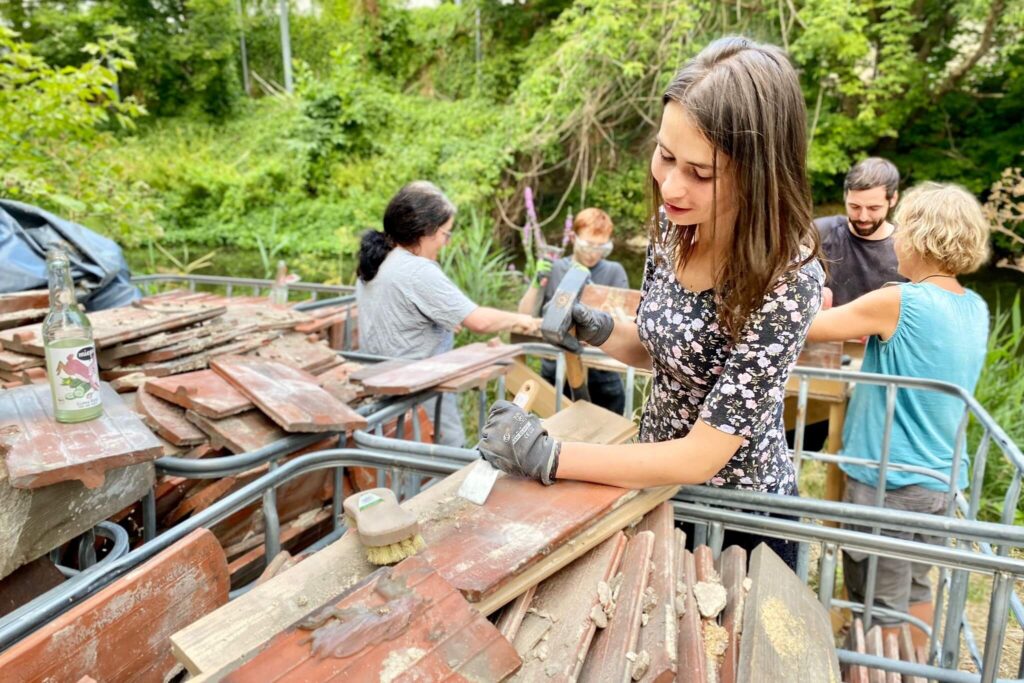
‘‘We practise them pretty directly as we try to use only materials that have been reclaimed, recycled.’’, Johanna clarifies. As a prime example, Johanna explains their approach to roof shingles. They are firstly gathered and cleaned during weekly meetings, a task that requires many hands to accomplish. After this time-consuming yet meaningful activity, the freshly cleaned shingles are carefully placed on the roof, embodying Schwemme’s commitment to sustainability through practical action.
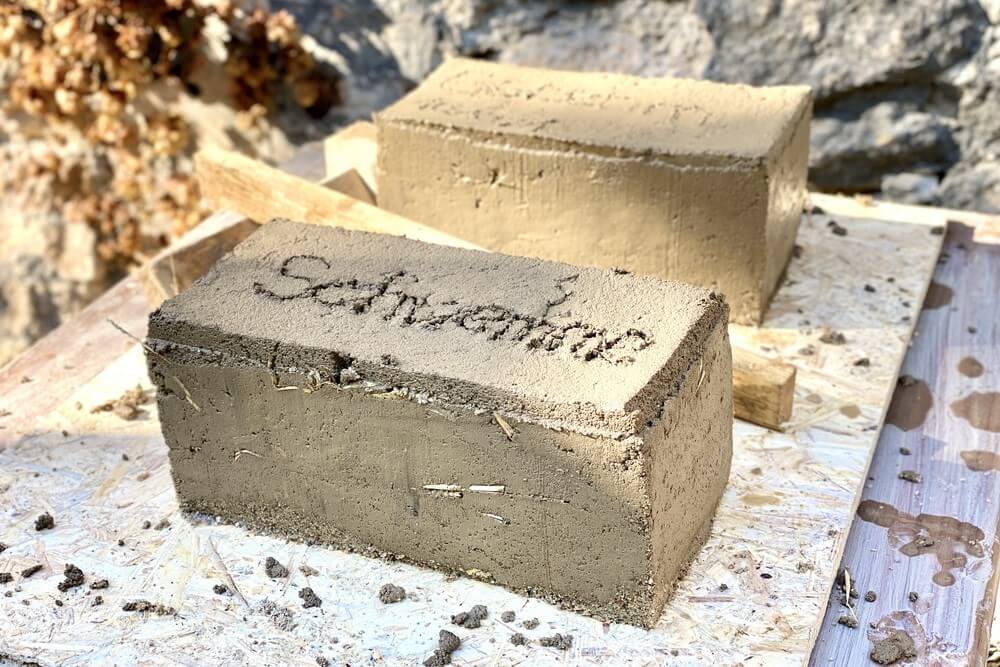
Another way that their sustainability philosophy is being applied to the building’s redevelopment is highlighted by Johanna, who explains the importance of continuing to utilise clay as a building material. As a characteristic product of the region, this practice holds significance beyond Schwemme. In 2023, the foundation organised activities that focused on celebrating and sharing knowledge of working with clay. So far, around 500 people of all ages have participated in the clay workshops guided by experienced trainers. These workshops have taught the participants the art of making clay bricks, with each person being given an opportunity to personalise their brick with their initials. The ultimate goal is to use these dried bricks for the flooring of the brewery, showcasing both sustainability and community involvement in action.
Final thoughts
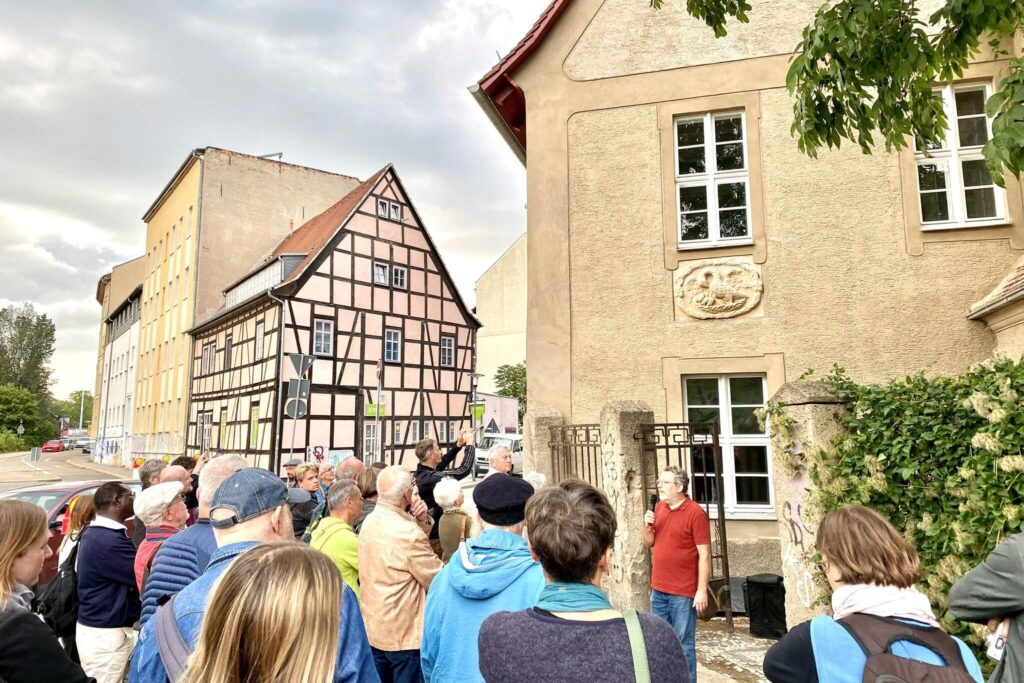
‘‘Our house by the river’’, as Johanna tenderly refers to Schwemme Brewery, can be seen as an inspiring example of collective effort towards heritage revitalization and reuse process which puts community engagement at its core. Schwemme’s overall concept follows an approach that ensures that the brewery distinguishes itself as a vibrant and sustainable hub of activities in Halle, aimed at preserving its cultural significance while adapting to contemporary needs. Moreover, reimagining this historical space also means ensuring its relevance and sustainability for generations to come.
With every step of the project carefully weighted and backed up through engaged volunteers, Schwemme Brewery is slowly becoming Halle’s spirited cultural space where the multilayered past is celebrated and offered with a modern twist.
We would like to thank the association Schwemme e.V. for their collaboration while writing this article.
If you wish to contact the authors of this article, please send an email to community@europeanheritagetimes.eu
